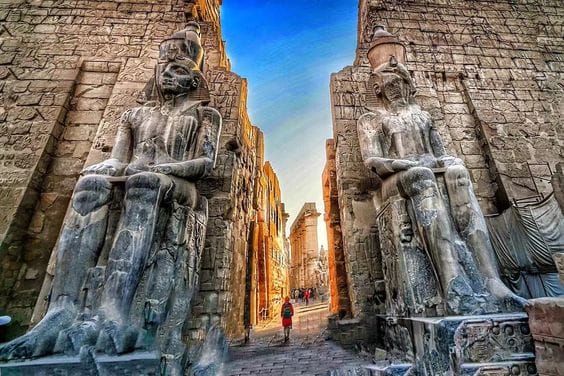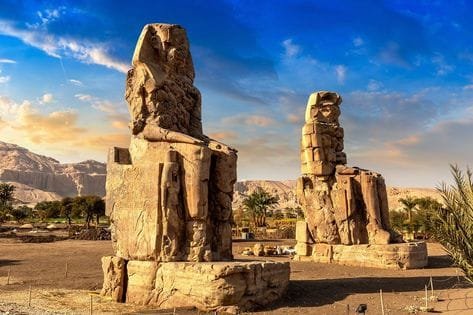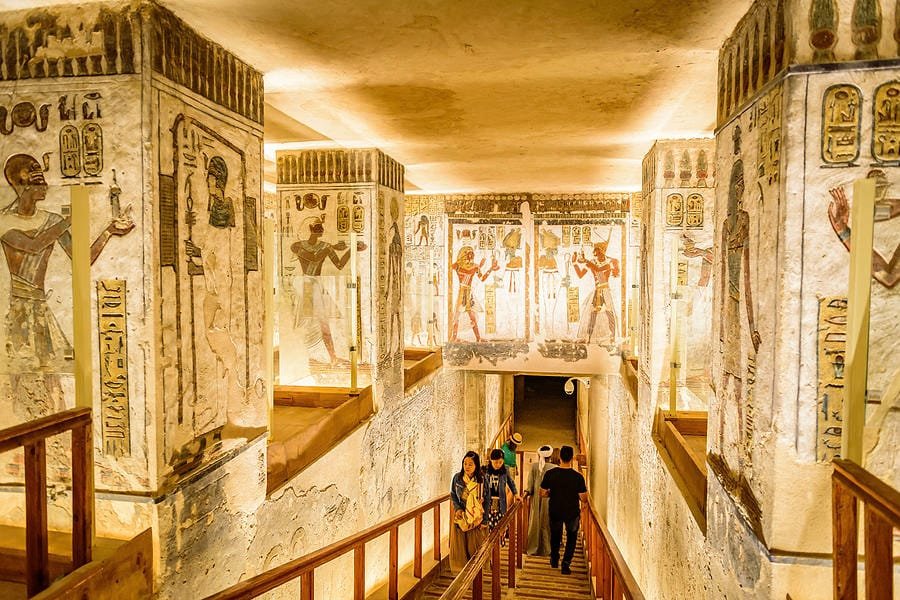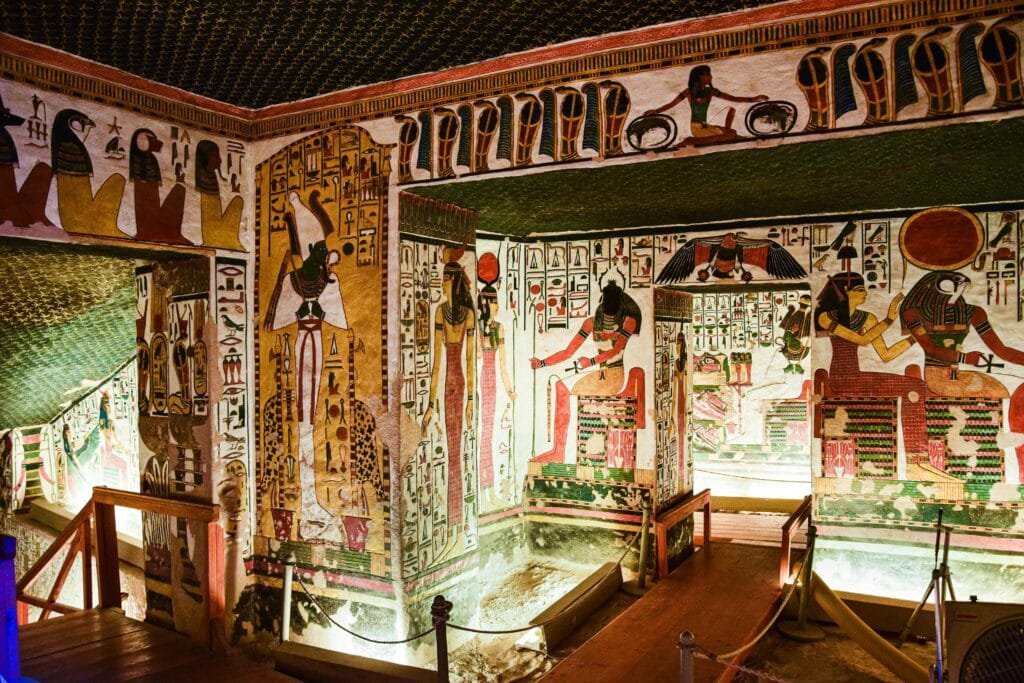Luxor, often referred to as the world’s greatest open-air museum, is a treasure trove of ancient Egyptian history and culture. Located along the Nile River, this mesmerizing city offers a wealth of archaeological wonders, including the iconic temples, tombs, and monuments that once stood as a testament to Egypt’s powerful pharaohs. A guided tour in Luxor is the perfect way to fully immerse yourself in the grandeur of ancient Egypt and gain deeper insights into the civilization that shaped much of the world’s history. With Egypt Tour Magic, you’ll have the opportunity to explore Luxor’s most famous sites, including the Valley of the Kings, Karnak Temple, Luxor Temple, and more, all with an expert guide who will bring these ancient wonders to life.
- Egypt Tour Magic
- Egypt Tour Packages
- Excursions in Egypt
- Cairo Tours and Excursions
- Hurghada Tours and Excursions
- Soma Bay Tours and Excursions
- Makadi Bay Tours and Excursions
- Sahl Hasheesh Tours and Excursions
- El Gouna Tours and Excursions
- Marsa Alam Tours and Excursions
- Port Ghalib Tours and Excursions
- El Quseir Tours and Excursions
- Dendera and Abydos Day Tours
- Aswan Tours and Excursions
- Luxor Tours and Excursions
- Alexandria Tours and Excursions
- Sharm El Sheikh Tours and Excursions
- Top Rated Tours in 2025
- Optional Excursions in Egypt
- Private Transfer
- Blogs About egypt
- Ancient Egypt
- What You Need To know Before Your First Trip To Egypt
- Best Places to Visit in Egypt 2025
- Top Attractions in Red Sea Resorts 2025
- Top 10 Tourist Activities in Egypt
- Top 30 Activities You Can’t Miss in Egypt
- The Guide to Guided Tours in Egypt
- Egypt’s Ancient and Modern History
- The Nile River
- The Deserts of Egypt
- Historical Sites in Egypt
- Cairo
- Alexandria
- Luxor
- Aswan
- The Red Sea
- Dendera Temple
- El Fayoum Oasis
- Bahariya Oasis
- Siwa Oasis
- Al Alamein
- Marsa Matruh
- Ancient Egyptian gods
- famous Egyptian dishes
- UNESCO World Heritage sites
- About Us
- Why Egypt Tour Magic
- Egypt Tour Magic
- Egypt Tour Packages
- Excursions in Egypt
- Cairo Tours and Excursions
- Hurghada Tours and Excursions
- Soma Bay Tours and Excursions
- Makadi Bay Tours and Excursions
- Sahl Hasheesh Tours and Excursions
- El Gouna Tours and Excursions
- Marsa Alam Tours and Excursions
- Port Ghalib Tours and Excursions
- El Quseir Tours and Excursions
- Dendera and Abydos Day Tours
- Aswan Tours and Excursions
- Luxor Tours and Excursions
- Alexandria Tours and Excursions
- Sharm El Sheikh Tours and Excursions
- Top Rated Tours in 2025
- Optional Excursions in Egypt
- Private Transfer
- Blogs About egypt
- Ancient Egypt
- What You Need To know Before Your First Trip To Egypt
- Best Places to Visit in Egypt 2025
- Top Attractions in Red Sea Resorts 2025
- Top 10 Tourist Activities in Egypt
- Top 30 Activities You Can’t Miss in Egypt
- The Guide to Guided Tours in Egypt
- Egypt’s Ancient and Modern History
- The Nile River
- The Deserts of Egypt
- Historical Sites in Egypt
- Cairo
- Alexandria
- Luxor
- Aswan
- The Red Sea
- Dendera Temple
- El Fayoum Oasis
- Bahariya Oasis
- Siwa Oasis
- Al Alamein
- Marsa Matruh
- Ancient Egyptian gods
- famous Egyptian dishes
- UNESCO World Heritage sites
- About Us
- Why Egypt Tour Magic
Guided Tours in Luxor: Discovering the Heart of Ancient Egypt
Valley of the Kings: The Eternal Resting Place of Pharaohs
The Valley of the Kings is one of Egypt's most iconic and historically significant sites, renowned for being the final resting place of some of Egypt’s most powerful and famous pharaohs. Located on the west bank of the Nile near Luxor, this vast necropolis houses the tombs of rulers from the New Kingdom, including the famous Tutankhamun, Ramses the Great, and Seti I. A guided tour through the Valley of the Kings provides an extraordinary opportunity to step inside the tombs of these great kings and explore the intricately decorated chambers that have been preserved for thousands of years. Each tomb within the Valley is uniquely designed, with elaborate paintings, hieroglyphs, and reliefs depicting scenes of the pharaohs’ journey to the afterlife. These images offer a glimpse into the spiritual and religious beliefs of ancient Egyptians, illustrating rituals designed to ensure the pharaoh’s safe passage to the underworld. As your guide takes you through the tombs, you will learn about the symbolic meaning of the paintings and the elaborate burial practices that accompanied these royal entombments. The most famous tomb in the Valley is that of Tutankhamun, whose tomb was discovered by archaeologist Howard Carter in 1922. The discovery of Tutankhamun’s tomb, nearly untouched by looters, revealed a treasure trove of artifacts that have provided invaluable insights into the life and death of the young pharaoh. Visiting the tomb of Tutankhamun on a guided tour allows you to witness firsthand the significance of this monumental discovery and its impact on our understanding of ancient Egypt. A guided tour of the Valley of the Kings with Egypt Tour Magic ensures that you gain a comprehensive understanding of this historic site, enhancing your appreciation of Egypt's rich cultural and royal legacy.

Karnak Temple: A Glimpse into Egypt’s Sacred World
Karnak Temple, located in Luxor, is one of the largest and most impressive temple complexes in the world. This vast religious site is dedicated to Amun-Ra, the king of the Egyptian gods, and served as the central place of worship for more than 2,000 years. Visiting Karnak on a guided tour allows you to fully experience its immense scale and understand the architectural and religious significance of this awe-inspiring site. As you enter the temple complex, the grandeur of Karnak is immediately apparent. The Great Hypostyle Hall, with its 134 towering columns, is one of the most iconic features of Karnak and one of the most photographed sights in Egypt. These massive columns, which are decorated with intricate carvings and reliefs, create a powerful visual experience, transporting visitors back to the height of ancient Egyptian religious life. The sheer scale of Karnak and its unique architectural design are a testament to the dedication and resources that went into the construction of the temple. Your expert guide will lead you through the various sections of the complex, explaining the significance of each area. The temple’s construction spanned centuries, with different pharaohs adding their own contributions, including monumental pylons, obelisks, and statues. At the heart of Karnak lies the Holy of Holies, where the statue of Amun-Ra was kept, and the annual Opet Festival, one of Egypt’s most important religious events, took place. A guided tour of Karnak Temple with Egypt Tour Magic will not only deepen your understanding of the site’s architectural wonders but will also provide insights into the religious and political life of ancient Egypt. It’s an essential stop for anyone eager to explore Egypt’s sacred history.

Luxor Temple: The Heart of Ancient Egyptian Kingship
The Luxor Temple, situated on the east bank of the Nile, is one of the most majestic temples in Egypt. Dedicated to Amun-Ra, his consort Mut, and their son Khonsu, Luxor Temple is a symbol of the divine power of the pharaohs and their connection to the gods. The temple’s construction dates back to the New Kingdom, and it was originally built by Amenhotep III, with later additions by Ramses II, making it a fascinating site that reflects both religious devotion and political authority. The first thing visitors notice when approaching Luxor Temple is its grand entrance, flanked by six towering statues of Ramses II, one of Egypt’s most powerful pharaohs. As you walk through the temple’s massive pylon gates, you’ll enter a world of stone carvings and majestic columns that tell stories of the divine power and authority bestowed upon the pharaohs. The temple was designed not only as a place of worship but also as a venue for royal ceremonies and celebrations, particularly the annual Opet Festival, during which the statues of the gods would be transported from Karnak to Luxor. Inside the temple, your Egypt Tour Magic guide will provide a comprehensive history of the site, explaining the significance of its structure and the rituals that took place within its walls. The temple’s layout is designed to symbolize the pharaoh's divine kingship, with sections dedicated to different deities and sacred ceremonies. The temple's colonnaded halls, with their beautifully preserved reliefs, depict scenes of the pharaohs' victories and divine interactions. A guided tour of Luxor Temple will give you a deeper understanding of the religious and political role the temple played in ancient Egyptian society, as well as its significance as a symbol of kingship and divine rule.
Valley of the Queens: The Royal Burial Ground of Queens and Princesses
Located just a short distance from the Valley of the Kings, the Valley of the Queens served as the final resting place for the wives, children, and other royal family members of Egypt’s pharaohs. While it is often overshadowed by the more famous Valley of the Kings, the Valley of the Queens offers equally fascinating insights into the royal burials of the ancient Egyptian elite. Visiting this site on a guided tour provides a unique opportunity to explore the tombs of these royal women, which are adorned with vibrant and well-preserved wall paintings that reveal much about the daily life, beliefs, and funerary practices of ancient Egypt. The most famous tomb in the Valley of the Queens is that of Nefertari, the beloved wife of Ramses II. Her tomb, known for its stunningly beautiful frescoes, is considered one of the finest examples of ancient Egyptian tomb art. The intricate scenes inside Nefertari’s tomb depict her journey to the afterlife, with vibrant depictions of gods, rituals, and symbols of the afterlife. Exploring this tomb allows visitors to gain insight into the status of royal women in ancient Egypt and their vital role in the religious and political systems of the time. Your Egypt Tour Magic guide will provide detailed explanations of the burial practices and rituals that were carried out for the queens and princesses of ancient Egypt. From the symbolic art in the tombs to the stunning craftsmanship of the burial chambers, a visit to the Valley of the Queens provides a comprehensive look into the royal families that shaped ancient Egypt’s history.

Temple of Hatshepsut: The Mortuary Temple of a Female Pharaoh
The Temple of Hatshepsut, located on the west bank of the Nile, is one of the most stunning and unique temples in Egypt. This mortuary temple, dedicated to the great female pharaoh Hatshepsut, is an architectural masterpiece that blends seamlessly into the surrounding cliffs of Deir el-Bahari. Built during the New Kingdom, the temple is an enduring symbol of Hatshepsut’s reign and her efforts to assert her power as a woman in a male-dominated society. Unlike other Egyptian temples, which typically have a symmetrical design, the Temple of Hatshepsut is a series of terraces that rise up the cliffs, giving it a grand, pyramid-like appearance. The temple is renowned for its striking design, with long colonnades and wide courtyards that allow light to filter through, creating an awe-inspiring atmosphere. The temple’s walls are adorned with scenes of Hatshepsut’s divine birth, her reign, and her successful expedition to the Land of Punt, which brought back valuable resources such as incense, myrrh, and gold. As you explore the temple with your Egypt Tour Magic guide, you’ll learn about Hatshepsut’s remarkable reign, which included extensive trade and architectural achievements. Despite her success, Hatshepsut's memory was almost erased by her successor, Thutmose III, which makes this temple even more significant as it is one of the few places that commemorates her legacy. Visiting the Temple of Hatshepsut provides a unique opportunity to learn about one of ancient Egypt’s most fascinating and powerful female rulers.

Colossi of Memnon: Monumental Guardians of the West Bank
The Colossi of Memnon are two massive stone statues that stand proudly on the west bank of the Nile, near the Valley of the Kings. These colossal statues are the remnants of what was once the mortuary temple of Amenhotep III, a powerful pharaoh of the 18th dynasty. Despite the temple's ruins, the Colossi remain an impressive and iconic feature of Luxor, drawing visitors from all over the world who come to marvel at their size and mysterious history. Each statue stands approximately 18 meters (59 feet) tall and weighs an astonishing 720 tons. The Colossi depict Amenhotep III seated on a throne, with his hands resting on his knees, and his facial features are finely detailed, despite centuries of erosion. Over time, the statues have become famous not only for their sheer scale but also for the mysterious phenomenon that occurred at dawn. In ancient times, the statues were known to emit a strange, haunting sound when the morning sun heated the stone. This sound was thought by the locals to be the voice of the god Amun, and it became a tourist attraction for centuries, earning the Colossi the name "The Singing Statues" or "Memnon." During your guided tour, Egypt Tour Magic's expert guides will share the fascinating history and symbolism of these statues. You’ll learn about the significance of Amenhotep III’s reign, his grand mortuary temple, and the eventual decline of the statues due to natural disasters and the passage of time. The Colossi of Memnon are also symbolic of Egypt's ability to create monumental works of art that have withstood the ravages of time, representing the eternal presence of the pharaohs in the landscape of the ancient world. Visiting the Colossi of Memnon is an unforgettable experience that offers a glimpse into ancient Egypt’s artistic grandeur and the mystique of its rulers. With your guide’s insight, the statues transform from mere stone figures into guardians of a lost civilization.




